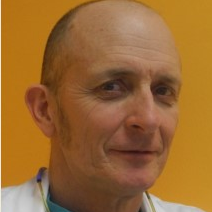Computer Assisted Maxillo-Facial Surgery
A special issue of Journal of Personalized Medicine (ISSN 2075-4426). This special issue belongs to the section "Methodology, Drug and Device Discovery".
Deadline for manuscript submissions: closed (30 April 2023) | Viewed by 22502
Special Issue Editors
Interests: computer assisted maxillofacial surgery; orthognatic surgery; orbital surgery; tmj surgery; maxillofacial trauma
Special Issue Information
Dear Colleagues,
In the last 25 years, the rapid advances in 3D imaging, computer aided design and computer aided manufacturing (CAD/CAM), rapid prototyping technologies, and intraoperative navigation have led to the development of computer assisted surgery (CAS), in which pre-, intra-, and postoperative phases are inextricably linked together in a dynamic chain which improves the predictability, feasibility, and clinical outcome of complex surgical operations.
The transfer of 3D imaging, and computer aided design and manufacturing with powerful software, from industry to medicine has allowed the enormous improvement of structural diagnostic processes, and consequently of planning and 3D virtual simulation of surgical procedures. The application of computer aided manufacturing and 3D printing in medical fields such as traumatology, orthopedics, neurosurgery, implant dentistry, reconstructive plastic surgery, and craniomaxillofacial surgery has led to the production of different patient specific surgical tools as anatomical models, cutting and positioning guides, patient specific implant, and fixation devices. Theis has allowed better results, and more predictable and less invasive surgeries, as witnessed by a steadily increasing number of studies.
These processes have quickly progressed to different surgical specialties, moving from hard tissue to soft tissue, adapting technologies to different and new challenges.
The spread of 3D printing and free source medical software has made in-house, low-cost application of these technologies possible, increasing the flexibility and availability of treatments. Craniomaxillofacial surgery has been a cornerstone in the development of high precision surgery, based on the integration of digital technologies, rapid prototyping, and less invasive surgery. Today, oral and craniomaxillofacial surgery are at the cutting edge of personalized, patient specific, customized medicine.
In this Special Issue of JPM, leading researchers and surgeons will present an overview of the role of computer assisted surgery in the development of personalized, patient centered medicine. Future research will open up the chance for further clinical applications of digital technology in surgery.
Dr. Giovanni Gerbino
Dr. Emanuele Zavattero
Guest Editors
Manuscript Submission Information
Manuscripts should be submitted online at www.mdpi.com by registering and logging in to this website. Once you are registered, click here to go to the submission form. Manuscripts can be submitted until the deadline. All submissions that pass pre-check are peer-reviewed. Accepted papers will be published continuously in the journal (as soon as accepted) and will be listed together on the special issue website. Research articles, review articles as well as short communications are invited. For planned papers, a title and short abstract (about 100 words) can be sent to the Editorial Office for announcement on this website.
Submitted manuscripts should not have been published previously, nor be under consideration for publication elsewhere (except conference proceedings papers). All manuscripts are thoroughly refereed through a single-blind peer-review process. A guide for authors and other relevant information for submission of manuscripts is available on the Instructions for Authors page. Journal of Personalized Medicine is an international peer-reviewed open access monthly journal published by MDPI.
Please visit the Instructions for Authors page before submitting a manuscript. The Article Processing Charge (APC) for publication in this open access journal is 2600 CHF (Swiss Francs). Submitted papers should be well formatted and use good English. Authors may use MDPI's English editing service prior to publication or during author revisions.
Keywords
- computer assisted surgery
- orthognatic surgery
- reconstructive surgery
- 3D printing
- patient specific implants
- virtual planning







